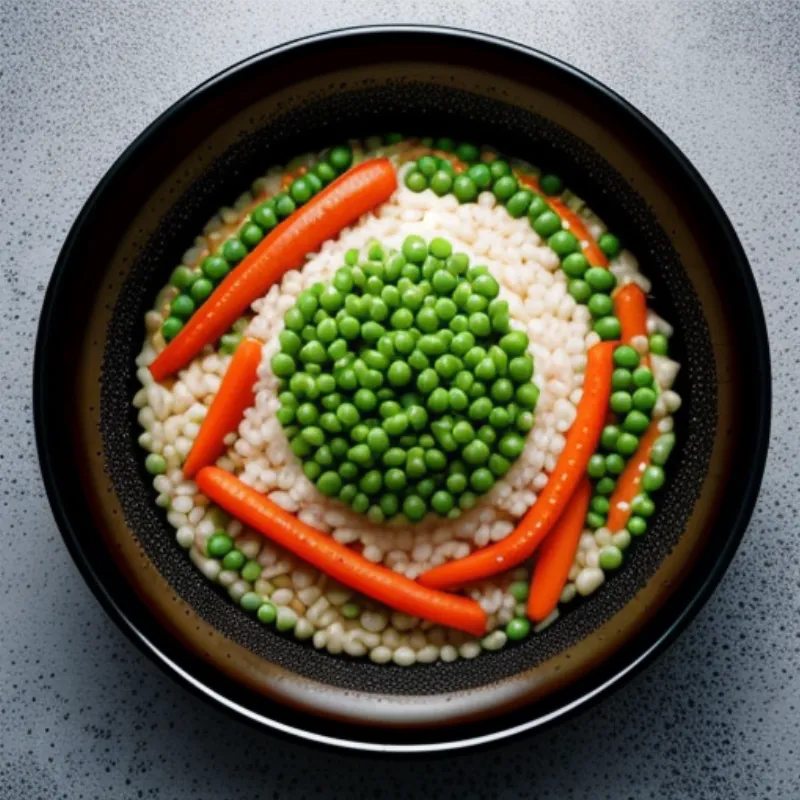Barley, with its nutty flavor and chewy texture, is a wonderfully versatile grain that deserves a place in everyone’s culinary repertoire. While often overlooked, boiled barley is incredibly easy to make and offers a blank canvas for flavor combinations. Whether you’re looking for a hearty side dish, a base for a salad, or a comforting addition to soups and stews, learning How To Make Boiled Barley opens a world of culinary possibilities.
Unveiling the Simplicity and Versatility of Boiled Barley
Barley is an ancient grain, dating back thousands of years. It’s packed with nutrients like fiber, protein, and various vitamins and minerals, making it a healthy and satisfying addition to any meal. One of the simplest and most versatile ways to enjoy barley is by boiling it.
“I love introducing people to the wonders of barley,” says Chef Michael, a renowned chef specializing in ancient grains. “It’s such a forgiving grain to cook with, and the flavor is truly remarkable.”
This guide will walk you through the process step-by-step, ensuring you achieve perfectly cooked barley every time.
Ingredients You’ll Need:
- 1 cup pearl barley
- 3 cups water or broth (vegetable, chicken, or beef)
- 1/2 teaspoon salt (optional, but recommended)
Optional additions for extra flavor:
- 1 tablespoon butter or olive oil
- 1/2 teaspoon dried herbs like thyme, rosemary, or oregano
Tools of the Trade:
- Medium-sized pot
- Fine-mesh strainer
Let’s Get Cooking: Step-by-Step Guide
- Rinse and Drain: Begin by rinsing the barley under cold water until the water runs clear. This removes any excess starch and impurities.
- Combine and Boil: In your pot, combine the rinsed barley, water or broth, and salt (if using). Bring the mixture to a boil over medium-high heat.
- Simmer to Perfection: Once boiling, reduce the heat to low, cover the pot, and let the barley simmer for about 25-30 minutes, or until the grains are tender but still chewy.
- Fluff and Serve: After the cooking time, remove the pot from the heat and let it stand, covered, for 5-10 minutes. This allows the barley to absorb any remaining liquid and become even more tender. Finally, fluff the barley with a fork and serve warm.
Tips and Tricks for Barley Brilliance
- Toasting for Enhanced Flavor: For an extra layer of nutty flavor, try toasting the barley in a dry skillet over medium heat for a few minutes before boiling.
- Adjusting Liquid Ratios: If you prefer a creamier texture, you can increase the liquid ratio to 4 cups per 1 cup of barley.
- Troubleshooting Doneness: If the barley has absorbed all the liquid but is still too chewy, simply add a little more water or broth, cover the pot, and continue to simmer until tender.
Serving Suggestions:
- As a hearty side dish: Serve boiled barley alongside roasted vegetables, grilled chicken or fish, or as part of a grain bowl.
- In soups and stews: Add cooked barley to your favorite soups and stews for a boost of texture and nutrition.
- Cold salad base: Let the boiled barley cool completely and toss it with chopped vegetables, herbs, nuts, and a vinaigrette dressing for a refreshing salad.
Barley FAQs:
Q: What’s the difference between pearl barley and hulled barley?
A: Pearl barley has been pearled, meaning it’s been processed to remove the outer bran layers. This results in a quicker cooking time and a lighter texture. Hulled barley, on the other hand, retains its bran layers and requires a longer cooking time.
Q: Can I cook barley in a rice cooker?
A: Yes, you can cook barley in a rice cooker! Use a 1:2 ratio of barley to water or broth, and select the “brown rice” or “grain” setting.
 Bowl of Boiled Barley with Vegetables
Bowl of Boiled Barley with Vegetables
 Close Up of Barley Grains
Close Up of Barley Grains
By mastering the art of how to make boiled barley, you’re opening a door to a world of culinary possibilities. This humble grain is not only delicious and versatile but also incredibly good for you. So why not give it a try? Your taste buds (and your body) will thank you!
